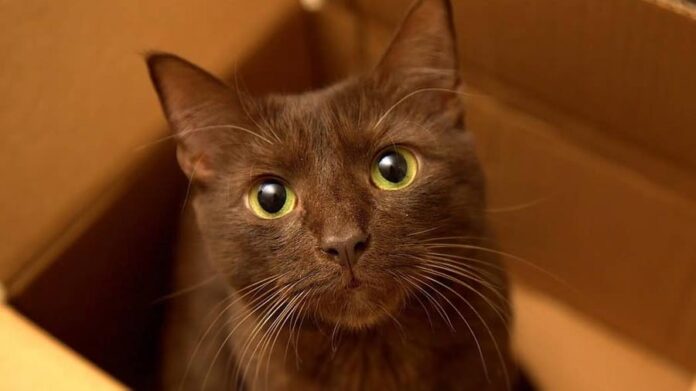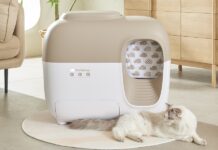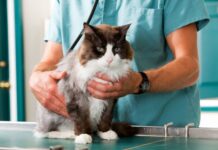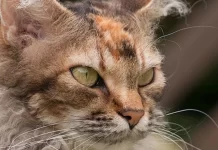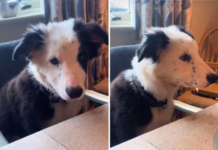Last Updated on August 25, 2023 by Fumipets
Decoding Cat Breeds: How to Tell What Breed Your Cat Is
Identifying the breed of your cat can be both intriguing and challenging, especially when considering the diverse range of feline breeds. While some cats have distinct characteristics, others might leave you guessing. Let’s explore how to determine your cat’s breed and gain insight into their genetic heritage in this summary.
Decoding Cat Breeds
Persian cats stand out from the crowd thanks to their smushed features and long, plush coats. The slender physique, blue eyes, and colorpoint fur of a Siamese are undeniable indicators. However, things might get a bit more difficult when it comes to your animal friend that you adopted from a shelter.
According to Alison Gerken, DVM, of the San Francisco SPCA, “A cat’s physical characteristics and behavior may provide clues as to which breed they might be, but no single characteristic or combination of characteristics can be used to determine a cat’s breed with certainty.” While certain cat types are easier to discern, mixed breed cats often look nothing like their parents or even their littermates, making it difficult to tell which breed they are.
So how can you identify the breed of your cat? There are many methods to speculate, but only one will result in a reliable response.
How to Determine Your Cat’s Breed Using Physical Traits
According to Florida Veterinary Behavior Service’s board-certified veterinary behaviorist Lisa Radosta, DVM, it’s difficult to determine a mixed-breed cat’s genetic makeup just by looking at him.
“In dogs, there is evidence that we are not very good at figuring out what breeds are present in a mixed breed dog,” the author claims. There is no basis for supposing that we can identify the mixed breeds in a cat.
While it’s unlikely that you can identify certain breeds based just on appearance, Gerken claims that there are cues in your cat’s appearance that might allude to his heritage.
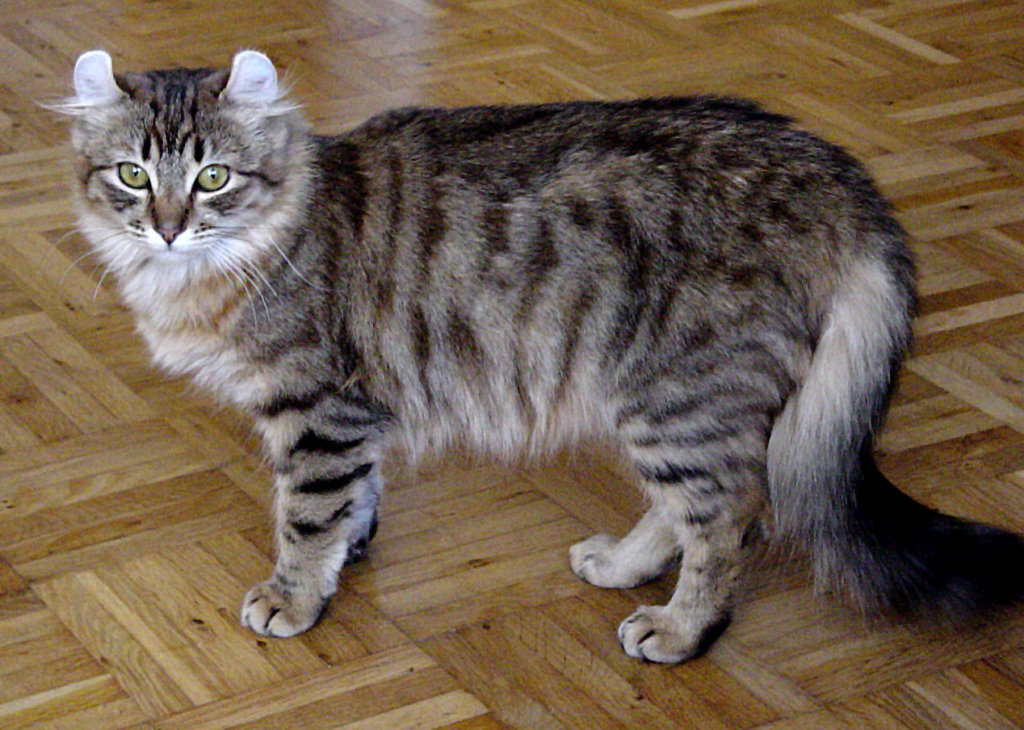
Coat Color, Pattern, and Length
While certain hues are prevalent regardless of type (for example, orange tabbies and black cats aren’t breed-specific), some hues and patterns are more prevalent in particular cat breeds than others.
The colors and patterns of a cat’s fur coat may vary greatly, according to Gerken. “While certain cat breeds, like the Bengal and Egyptian Mau, have coats that come in spotted or marbled patterns, other cat types, like the Siamese and Himalayan breeds, are color tipped, having paws, faces, ears, and tails that are a different shade from their bodies.
However, according to Gerken, certain cat species’ coat colors and patterns may also be present in cats of mixed breeds. Similarly, the length of your cat’s hair doesn’t reveal anything about its genetic make-up.
According to her, domestic shorthair, domestic medium hair, or domestic longhair cats tend to be mixed-breed cats. Domestic shorthair cats make up 90–95 percent of pet cats in the United States, making them the most prevalent breed.
In other words, just because your cat has long, fluffy hair doesn’t always make him a Maine coon.
Size
The typical cat weighs approximately 11 pounds, but certain breeds—like the Maine coon—can reach as much as 20 pounds, while others—like petite Singapuras—are much less. According to Gerken, your cat’s size and body shape may be able to identify the breed of cat he is. Skinny and slender cats may belong to a leaner breed, like the Siamese, while rotund animals may have Norwegian forest cat ancestry.
Head Shape
Sometimes the form of your cat’s head might also provide hints.
According to Gerken, certain breeds, such Siamese cats, have more angular and narrow characteristics than others, including Persians, Himalayans, and Scottish folds. “Some cat breeds have unique ear characteristics. American curl and Scottish fold cats, respectively, have folded and curled ears. Other breeds, such as the Maine Coon, Ragdoll, and Norwegian Forest Cats, may have tufted ears.
She says, “Taking into account all of a cat’s physical characteristics may assist restrict the list of a cat’s prospective breeds. “For instance, a cat is more likely to be a Siamese than a Maine coon if it has a lean frame, an angular face, and dark-colored points on its face, feet, and tail. A cat is more likely to be a Maine coon than a Siamese if it has a huge frame, a long fur coat, and large ears with hair tufts on them.

How to Determine Your Cat’s Breed Based on Behavior Traits
Though it is inaccurate, identifying your cat’s breed based on looks is considerably more accurate than observing his habits. Even if it’s true that various cat breeds have unique temperaments and characteristics, it doesn’t indicate a cat that like water is a Turkish van or a Persian cat.
Siamese are talkative, but just because your cat is talkative doesn’t imply he is a Siamese, according to Radosta. The water doesn’t flow in both ways, in other words. Even while being talkative doesn’t always guarantee your cat is a Siamese, he usually will be if he is.
Using DNA Tests
You need a cat DNA test if you want to know with absolute certainty what breed your cat is. These tests decode your cat’s genome and provide you with extensive details about his ancestry using DNA that was collected from a cheek swab.
Feline DNA testing come in a variety of forms, including Basepaws and Optimal Selection by Wisdom Panel. However, testing may cost anywhere from $100 to $500, so they are not inexpensive. To identify your cat’s DNA, you may also inquire with your veterinarian about in-office blood testing.
Radosta offers the following suggestions if your budget does not allow for the purchase of feline genetics: “Relax! Regardless of breed, your cat is who he is, she explains. “His specialness is not due to his breed. A mixed-breed cat is every bit as unique as one that is purebred. Pay closer attention to what your cat does, how you engage with it, and if you’re making an effort to satisfy your cat’s needs.
Q&A on Identifying Your Cat’s Breed:
1. Can you accurately determine a cat’s breed based on appearance alone?
While some breeds have distinct physical traits, many cats are mixed breeds with unique appearances. Identifying breeds solely by looks can be challenging.
2. Are there any tools to help determine a cat’s breed?
Online breed identification tools and DNA tests can offer insights into your cat’s potential breeds based on their physical traits and genetic makeup.
3. What are some common visual cues for identifying specific breeds?
Certain breeds, like Siamese or Maine Coon, may have characteristic features such as coat patterns, ear shape, or body size. However, individual variation is common.
4. Can mixed-breed cats exhibit traits of specific breeds?
Yes, mixed-breed cats can display traits from various breeds due to their diverse genetic backgrounds. It can be challenging to pinpoint specific breeds in mixed-breed cats.
5. Is consulting a veterinarian or breed expert helpful in identifying a cat’s breed?
Yes, veterinarians and breed experts can provide insights based on experience and knowledge. They may consider physical traits, behavior, and lineage to make an informed assessment.
Unraveling the Enigma: Identifying Your Feline’s Heritage
Determining your cat’s breed can be a captivating journey that involves observation, research, and expert insight. While some cats proudly display their breed traits, others may keep their genetic history a secret. Remember that every cat, regardless of breed, brings its own unique charm and personality to your home. Embrace the mystery and celebrate the individuality of your feline friends, regardless of their breed.

